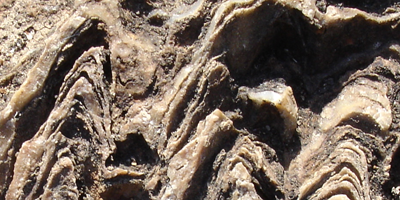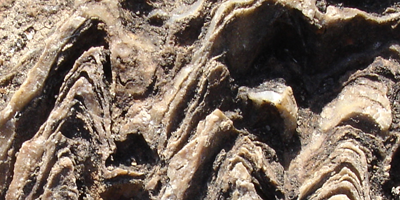Eons of Diffusive Growth
If you wanted evidence of the oldest life forms on Earth, the fossil mineral deposits called stromatolites would be a good place to start. Some of these -billion-year-old formations were deposited by many generations of biological films and take a variety of shapes and structures. Among the simplest are conical stromatolites, yet the growth processes that created even these basic forms are not well known. In Physical Review X, Alexander Petroff, now at Rockefeller University, New York, and colleagues present a model of stromatolite growth that allows them to work back and learn some of the details of the biological films that produced these ancient fossils.
Conical stromatolites form as ions of calcium (or occasionally silica) diffuse thorough a biofilm and precipitate as minerals around cells, causing the biofilm to fossilize. Over many generations, these structures can grow to the scale of a meter and mostly share a similar shape, suggesting a process of mineral precipitation common to all. Petroff et al. have found that if they start with a conically shaped structure, the precipitation rate at any location at the interface between the biofilm and the stromatolite is faster at places where the boundary curvature is high. This maintains the conical shape over eons of growth.
The authors not only confirm that their picture of diffusion through biofilms explains the shape of these ancient structures, they can also estimate some of the properties of the microbial mats that led to the fossils we see today. Measurements of stromatolites from formations of different ages allowed Petroff et al. to conclude that the biofilms producing these fossils billions of years ago were about millimeter thick, similar to present day microbial layers. – David Voss





